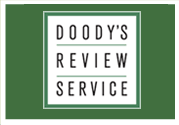|
|
|
eBook/Digital Version available from:
|
 Score: 92
Score: 92 |
 |
| Handbook of Infectious Disease Data Analysis |
 |
ISBN: 978-1-138-62671-3,
554 pages,
Hard Cover
ISBN-10: 1-138-62671-6 |
 |
| Copyright: |
2020 |
 |
| Edition: |
1st |
 |
| Editor: |
Held, Leonhard; Hens, Niel; O'Neill, Philip; Wallinga, Jacco |
 |
|
Specialties:
|
Biostatistics
, Infectious Disease |
 |
| Publisher: |
CRC Press/Taylor & Francis Group |
 |
| Imprint: |
Chapman & Hall |
 |
| Series Title: |
Chapman & Hall/CRC Handbooks of Modern Statistical Methods |
 |
| List Price: |
$200.00 |
 |
| Google: |
|
|
 |
|
|
|
|
Reviewer:
|
Douglas Gunzler,
PhD
(Case Western Reserve University School of Medicine)
|
 |
|
Range
|
Question
|
Score
|
| 1-10 |
Are the author's objectives met? |
10 |
| 1-10 |
Rate the worthiness of those objectives. |
10 |
| 1-5 |
Is this written at an appropriate level? |
5 |
| 1-5 |
Is there significant duplication? (1=significant, 5=insignificant) |
4 |
| 1-5 |
Are there significant omissions? (1=significant, 5=insignificant) |
4 |
| 1-5 |
Rate the authority of the authors. |
5 |
| 1-5 |
Are there sufficient illustrations? |
5 |
| 1-5 |
Rate the pedagogic value of the illustrations. |
4 |
| 1-5 |
Rate the print quality of the illustrations. |
4 |
| 1-5 |
Are there sufficient references? |
5 |
| 1-5 |
Rate the currency of the references. |
4 |
| 1-5 |
Rate the pertinence of the references. |
4 |
| 1-5 |
Rate the helpfulness of the index. |
4 |
| 1-5 |
If important in this specialty, rate the physical appearance of the book |
5 |
| 1-10 |
Is this a worthwhile contribution to the field? |
10 |
| 1-10 |
If this is a 2nd or later edition, is this new edition needed? |
N/A |
|
 |
|
Reviewer:
|
Douglas Gunzler,
PhD
(Case Western Reserve University School of Medicine)
|
 |
|
Description
|
| This book covers data analytic techniques for infectious disease data. It addresses a wide range of topics, from basic concepts and vocabulary to algorithms for analyzing outbreak, seroprevalence, and surveillance data. Beginning chapters effectively present the structure of infectious disease data as well as many fundamental models of the field (e.g., SEIR model) and reproduction numbers at appropriate levels for novices with quantitative backgrounds. The book also features many mathematical equations for the different algorithms. Some of the chapters include R-code to implement the methods. |
 |
|
Purpose
|
| The purpose is to give readers a sufficient background in infectious disease analysis. The authors point out that infectious disease data analysis is a highly active, fast-growing field. Thus, readers can use this background to explore any direction the field takes. This is an ambitious objective given the breadth of infectious disease data analysis. The book achieves this objective and is very much needed. |
 |
|
Audience
|
| This book is written for anyone with a background in mathematics and statistics with an interest in infectious disease data analysis. The authors note that no specialist knowledge of infectious disease is assumed. This audience may include graduate students and faculty with a quantitative focus. The book meets the needs of the intended audience. One caveat is that previous knowledge of infectious diseases may help readers understand the models and algorithms in more depth. The authors and contributors are recognized experts in the field who have developed methods commonly used in infectious disease data analysis. |
 |
|
Features
|
| The book begins with an epidemiological background of infectious disease data and the key variables in infectious disease data analysis, followed by a basic outline of epidemic models before moving on to more advanced methods for analysis of outbreak data, seroprevalence data, and surveillance data. The book does a commendable job providing the basic concepts and vocabulary of the field, explaining the structure of infectious disease data, and discussing fundamental models and methods. The book is well organized and reads clearly. Diagrams help readers understand the models. Some of the advanced chapters are highly technical and may lose readers not well versed in certain methods (e.g., Bayesian methods or survival analysis). |
 |
|
Assessment
|
| This is a high quality reference for anyone with a background in mathematics and statistics conducting infectious disease data analysis. To the best of my knowledge, there is no other book that covers the same variety of topics in infectious disease data analysis. Therefore, it is the most fundamental book for this field. |
 |
|
|
|
|
|
|
|
